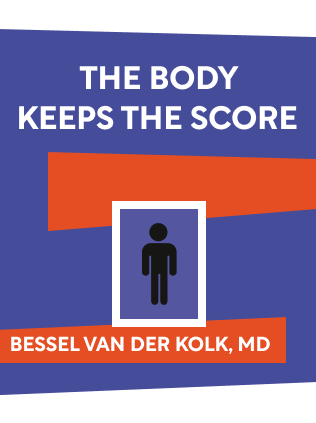

This article is an excerpt from the Shortform book guide to "The Body Keeps The Score" by Bessel van der Kolk. Shortform has the world's best summaries and analyses of books you should be reading.
Like this article? Sign up for a free trial here .
Do you want to know how to cure PTSD? Are there ways to cure PTSD and help with trauma?
There are many treatments that are effective in how to cure PTSD. Your options include different forms of therapy and medications.
Keep reading for ideas on how to cure PTSD and treatments that may or may not work.
How to Cure PTSD
As we’ve discussed, trauma haunts survivors with flashbacks, triggering psychological and physical reactions that are out of the sufferer’s control. The goal of treatment is to regain control of yourself and your thoughts, feelings, and body. Generally this involves four steps:
- Learning how to be calm and focused
- Finding a way to stay calm in the face of sensations (images, sounds, smells) associated with your trauma
- Learning how to be present and engage with the people around you
- Not hiding things from yourself, such as the ways you adapted in order to survive during and after your trauma
Learn to Remain Calm
So what’s the solution for how to cure PTSD? Although the author insists that talk therapy does not heal trauma, trauma survivors eventually need to face the facts of their traumatic event in order to move past it. However, they shouldn’t do so until they learn to cope with the emotions and sensations the memory triggers, so that recalling the event doesn’t retraumatize them.
As we explained earlier, trauma lives in the emotional brain, which triggers physical responses and is not governed by logic as the rational brain is. Consequently, you can’t start by approaching your trauma with logic (e.g. “it wasn’t your fault,” “you were just a child,” “you had no control over the situation”) and you can’t reason your way through your emotions: Understanding why you feel something won’t prevent you from feeling it. But understanding that your trauma is triggering certain emotions can help you begin to resist intense overreactions to everyday situations (e.g. exploding at your spouse for an innocent comment that reminds you of your abusive father).
Therapy for trauma must help patients reestablish a balance between the emotional brain and the rational brain, instead of letting the hyperreactive emotional brain send them into overdrive or cause them to shut down in response to minor threats. In order to do this, patients must practice self-awareness, or interoception, to notice what’s going on inside themselves.
Manage Hyperarousal
This is one day to day way that may help you learn how to cure PTSD in the long run. As we’ve discussed, trauma survivors remain hypervigilant, are easily sent into a fight-or-flight response, and take longer to calm down after a perceived threat has passed. To heal, they must gain control over their arousal system through mindful breathing and movement’ slow, deep breaths with long exhales trigger the parasympathetic nervous system to slow your heart rate. Yoga, changing, martial arts, and rhythmic drumming can all help trauma sufferers gain and maintain a sense of calm, even in the face of traumatic memories and flashbacks and the emotions they arouse.
Practice Mindfulness
Mindfulness means having a self-awareness of your emotions, your body, and your responses. Traumatized people are haunted by seemingly ever-present sensations remind them of their traumas, so they’re constantly either avoiding them, repressing them, or succumbing to them. Self-awareness gives trauma survivors the power to face those sensations and then move on from them. This may be a powerful tool for how to cure PTSD.
It begins by merely noticing how you’re feeling; as you pay closer attention to your emotions and the ways they shift — based on your thoughts, perceptions, breathing, or body posture — it becomes clearer that feelings are short-lived. That realization takes the power away from the emotion and gives you the option to decide how to respond, rather than feeling like a victim of your emotions and resorting to the habitual reactions you’ve developed to survive and cope.
Once you’ve begun noticing your feelings and physical sensations, label them and notice how certain emotions are tied to specific physical reactions. Again, noticing and identifying these sensations gives you the power to endure them, because you know that they are temporary and that you even have the power to change them.
Mindfulness has many documented benefits, including
- Easing psychiatric and psychosomatic symptoms such as depression and chronic pain
- Improving physical health by boosting the immune system and lowering blood pressure and stress hormone levels
- Boosting the brain’s ability for emotional regulation
- Calming the amygdala — which we described earlier as your internal smoke detector — and decreasing reactivity to perceived threats
Relationships are Vital for Resilience and Recovery
Humans are hard-wired to connect with others and be engaged members of communities. As such, strong, supportive relationships are the best protection against trauma and the biggest factor in healing from trauma. By the same token, trauma at the hands of a person who’s supposed to be a source of love and support is the most damaging because it undermines your ability to form new relationships that are necessary for healing.
If someone who’s supposed to love and protect you instead hurts and scares you, you adapt by shutting down and repressing how you feel. As you attempt to form new relationships, you’re likely to fear that this person will also hurt you in some way, so you shut down, turn away, or try to beat her to the punch by hurting her first. You may
In order to recover, you need someone who you can not only trust with your emotional baggage, but who will help you carry and begin to unpack it. Therapists are trained to help trauma sufferers in this way through three primary steps toward recovery:
- Gain stability and calmness
- Put traumatic memories and reenactments to rest
- Regain social connections
Several factors can help you determine if a therapist is the right fit for you and may be helpful on your journey for how to cure PTSD.
- Has she been through this same form of therapy as a patient?
- Is she open to exploring which treatment options fit best for you?
- Do you feel comfortable with her?
- Does she seem comfortable with herself and with you?
- Do you feel she genuinely wants to get to know you and what you need?
Synchronize with a Group
As we know from the earlier section on the importance of babies being attuned with their caregivers, humans thrive on feeling in sync with others. Trauma survivors often lose attunement with those around them when they collapse or shut down for survival; they can benefit greatly from activities that put them back in sync with others in a visceral way, such as kickboxing, dancing, choral singing, and the martial arts practice of aikido. Even forms of play can give people a sense of connection and physical attunement with each other.
Healing Through Touch
In contrast to oft-prescribed medications that help numb people to overwhelming sensations, physical touch — including hugs and rocking — is a powerful way to calm people and make them feel safe, protected and empowered.
Since trauma and tension is held in the body, so-called bodywork such as massage and Feldenkrais (a therapeutic method of movement) can help patients literally feel — and then release — sensations and tensions in their body that they may have gotten used to and are unaware of. Physical touch can also add to a patient’s physical self-awareness and help them feel more in tune and in control of their mind and body.
Reverse Immobilization
As we discussed earlier, people who are able to take action to help themselves or others in a trauma are more resilient, while those who were immobilized (e.g. trapped in a car accident, held down in an assault, or stuck in ea war zone) are more likely to suffer from the trauma; the stress hormones their bodies secreted to give them the power and energy to do something had no outlet, so they continue to pump into the body and trigger fight-or-flight responses or collapse. Treatments such as body-based therapies, sensorimotor psychotherapy, and somatic experiencing help patients essentially complete the actions they weren’t able to perform during the traumatic event, and thus resolve their trauma.
First the patients learn to gradually dip into their traumatic sensations and memories in a process called pendulation. With this method, patients find “islands of safety” in their bodies that they can retreat back to when traumatic memories become overwhelming; this can mean focusing on their hands, paying attention to their exhales, or touching acupressure points. Over time they can build up their tolerance for revisiting the trauma and the physical sensations it triggers.
Revisiting the trauma triggers physical impulses from the event (e.g. running or pushing someone away) that the patient was unable to do, and instead the patient will make subtler moves like twisting or backing away. The next step in treatment is to explore and modify those movements in order to complete the actions they couldn’t during the event, so they can get a sense of what it would’ve felt like to escape or fight back; this gives patients the sense of agency and the ability to protect themselves, of which the trauma robbed them.
CBT
The philosophy of cognitive behavioral therapy (CBT) is that repeatedly exposing a patient to the source of her fear and anxiety will eventually desensitize her and make her realize that her fear is irrational. However, as we’ve mentioned previously, the author maintains that CBT is an inadequate treatment for trauma because it instead tends to overwhelm, retraumatize, or worsen patients’ fixation on the event. Even when CBT effectively reduces a patient’s fear and anxiety, she’s likely to still suffer from physical problems, guilt, and other mental and emotional issues.
Rather than desensitization, trauma survivors need help integrating the traumatic memory into the timeline of their lives, placing it securely in the past, so they can fully accept that it is over. This still involves revisiting the memory, but the patient must be able to cope with the reactions that the trauma will inevitably bring up, so that she doesn’t become overwhelmed by emotions and is able to complete the integration.

———End of Preview———
Like what you just read? Read the rest of the world's best book summary and analysis of Bessel van der Kolk's "The Body Keeps The Score" at Shortform .
Here's what you'll find in our full The Body Keeps The Score summary :
- How your past trauma might change your brain and body
- What you can do to help your brain and body heal
- Why some trauma survivors can't recognize themselves in the mirror






